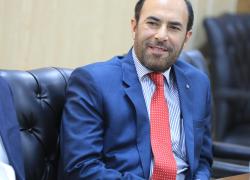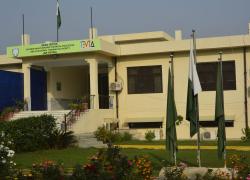Performance of the Vice-Chancellors and ban on recruitment and selection in universities in Pakistan
For performance evaluation of the Vice-Chancellors, serving in the public sector universities, the Government of Khyber Pakhtunkhwa, Higher Education Archives and Libraries Department for the first time, in the history of the universities has defined some pragmatic Key Performance Indicators (KPIs) which is regarded as a positive step towards reforming higher education sector in the province. The need for such indices was felt since long. Nevertheless, this important area failed to grab the attention of policymakers. In the absence of a comprehensive performance appraisal mechanism, the working of the Vice Chancellors in the past was not evaluated scientifically.
Purpose of the KPIs
The overarching aim of these KPIs is to develop a uniform, objective and standardized instrument for performance evaluation of the Vice-Chancellors with focus on their contribution towards academics, research, quality enhancement, administration, financial discipline, and strategic planning and human resource management in the universities.
The essence of KPIs
These KPIs, essentially, contain an exhaustive list of indicators, mainly based on the number of academic programs launched, the number of programs accredited, teachers-students ratio, the ratio of the total number of applications received for admission and the total number of students enrolled. These KPIs comprise of the new academic programs launched, new academic units established, conferences and workshops organized, adherence to quality assurance parameters and its extension to affiliated colleges. Besides, compliance with the university calendar, the number of meetings of the statutory bodies held and merit and transparency maintained in the recruitment and selection are also inherent parts of these KPIs.
Other KPIs included timely preparation and approval of the annual budget, the number of posts created, allocation of funds for co-curricular activities and the number of scholarships awarded. It also encompasses revenue generated from internal sources in comparison to government grants, compliance with the financial rules, adherence to public procurement rules and conformity of university’s accounts to global standards. It also covers the strategic plan for the medium and long-term development of the university, the number of developmental projects completed and new development projects envisaged and submitted to external agencies for funding.
A step towards reforming higher education
This is a remarkable first step towards a broad-based, deep-rooted and holistic approach to transforming higher education in the country. The incumbent Vice-Chancellors aspiring for further extension in tenure shall have definitely watch over these indicators and shall work diligently not only to bring improvement in the working environment in their respective universities but will also elevate their own standing with respect to these KPIs.
The missing link
However, some indicators were suggested to be missing from the list as reported by a section of the print media. The article, “An overview of the KPIs formulated for performance appraisal of the Vice-Chancellors” identified the same that include the number of PhD produced, the number of research journals launched/recognized, the number of patents registered and the number of books or book chapters published.
To take care of the financial health, the amount of funding generated from philanthropists, the number of academic programs launched in collaboration with industrial partners, filling of the key administrative positions, establishment of a full-fledged Students’ Counseling Center, placement office, financial aid office, HR Office, establishment of university-industry linkages, instituting Incubation Centers, the number of startups launched and the amount of funds generated out of it, are some more viable indicators worth considering.
KPIs and its relation to Recruitment and Selection
While looking into these KPIs microscopically, it is revealed that a great deal of KPIs on the basis of which performance of the Vice-Chancellors shall be evaluated pertains to recruitment and selection directly or indirectly. These include new academic programs launched, new academic units established, conferences and workshops organized, teachers-students ratio, adherence to quality assurance parameters in the university and its extension to affiliated colleges, number of meetings of the Senate, Syndicate, and Selection Board in compliance with provision of the Act, merit and transparency maintained in the recruitments and selection. These are some of the indicators contingent upon recruitment and selection.
Ban on recruitment and selection
However, very recently, the Government of Khyber Pakhtunkhwa Higher Education Archives and Libraries Department imposed a ban on all kinds of appointments and selection in the public sector universities in the Khyber Pakhtunkhwa for the obvious reason of emerging financial crisis. This action is thought not only a big blow to the autonomous status of the academia but will also annunciate serious repercussions for the public sector universities in the province. My earlier article, “ban on recruitment and selection in the universities and its sinister implications” has highlighted some of its sinister implications for the consumption of people at the helm of affairs to review the decision after thoughtful reconsideration.
Side effects of ban on recruitment and selection
Being a unilateral pronouncement of the government, it has drawn a strong reaction from various quarters such as academic leaders, universities’ top management and teaching staff association of the universities. This decision carries serious repercussions for the institutions of higher learning, constraining its capacity to hire the critical mass of human resources in certain key disciplines bearing serious fallout on the promotion of higher education in the province. Besides the renewal/extension in the contracts of staff and faculty shall become impossible for the universities, hence, the overall functioning of the universities shall be adversely affected. The universities would not be able to launch futuristic academic programs resulting in the deplorable performance of the Vice Chancellors. With the ban on recruitment and selection, the employees due for promotion shall also suffer severely affecting the overall performance of the universities.
Conclusion
The bottom line is that on the one hand the government has taken some revolutionary steps to improve the functioning of the universities but on the other has taken certain drastic measures which are destined to counterbalance its impact. It is beyond one’s understanding that in the face of ban on recruitment and selection, how the performance of the Vice-Chancellors shall be evaluated based on the KPIs recently developed. The government should lift ban on the recruitment and selection and allow the universities to function up to its full capacity.


















